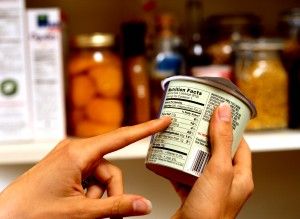Slash your intake of sugar with our smart tips.
You’re likely eating sugar throughout the day without even realizing it. Sugar is added to foods that don’t even taste all that sweet, like breads, condiments, and sauces. A high-sugar diet boosts your odds of tooth decay, heart disease, and diabetes, not to mention weight gain. We hope our guide will help you say no to sugar intake with these 10 simple tips.
1. Carefully Read Food Labels
You’ll quickly realize just how often sugar is added to foods when you look for it on ingredients lists. Even things that you don’t think are sweet, like tomato sauce, crackers, condiments, and salad dressings can be packed with sugar. Ingredients are listed in order of how much exists in the product, so if sugar’s near the top, that’s a red flag.
2. Learn Sugar’s Aliases
When you read food labels, you’ll need to look for more than just the word “sugar.” Sugar hides under several sneaky names, including high fructose corn syrup, dried cane syrup, invert sugar, molasses, sucrose, brown rice syrup, honey, and maple syrup. These can be listed separately on ingredients lists, so many foods, even seemingly healthy ones like yogurt and cereal, may contain three or four different types of sweetener. If several sugars appear on the label, it’s an indication that the food is less healthy than you may think.
3. Buy Unsweetened
So by now you’ve learned where sugar hides, well let’s start making changes to our diet. One strategy is to buy foods labeled “no added sugar” or “unsweetened.” You’ll find unsweetened versions of these common foods in most grocery stories: non-dairy milk like almond and soy, nut butters, applesauce, oatmeal, and canned fruit.
4. Don’t Stop Eating Sugar Altogether
Similarly known as going cold turkey on sugar isn’t really realistic for most people. Essentially cutting back slowly would in long term effects be more successful. If you normally put two packets of sugar in your coffee, for instance, try one for a week, then half, and finally add only a splash of milk. For your yogurt, mix half a serving of sweetened yogurt with half a serving of plain, and eventually move on to adding natural sweetness with fresh fruit.
5. Protein & Fat
Unhealthy carbs loaded with sugar can cause blood sugar to rise rapidly. To minimize this rapid rise and fall, pair protein, healthy fats, and fiber with your meal, all of which can slow down the release of blood sugar in your body and keep you full for longer. Fats are a key player because they help keep you fuller for longer, therefore helping to decrease your desire for sugar. Focus on fats like avocados, nuts, seeds, and heart-healthy oils like olive oil, walnut oil, and coconut oil.
6. Be Honest
When you’re reducing your sugar intake, you may be tempted to switch to artificial sugars for your sweet fix. But resist reaching for the diet soda, sugar-free candy, and packets of fake sugar in your latte. When you eat something sweet, your body expects calories and nutrition, but artificial sugars don’t give your body those things. That may be why fake sugars are associated with weight gain and not actually weight loss.
7. Up The Flavor
When you’re out remember to order an unsweetened latte and add flavor with cocoa or vanilla powder instead of throwing in cubes of sugar. Skip the flavored oatmeal and add a sweet kick with cinnamon, nutmeg, and ginger.
8. Don’t Drink It
Avoiding soda is a good idea, but that’s not the only sugar packed drink around. Even drinks that are considered healthy can contain more of the sweet stuff than you’re supposed to have in an entire day.
9. Enjoy A Dessert Now & Again
You can still indulge in an occasional sweet treat after you resolve to slash sugar. The idea is to avoid wasting your daily sugar quota on non-dessert foods like cereals, ketchup, and bread. To avoid overdoing it, set specific rules about when you may enjoy dessert: only after dinner on the weekends or at restaurants as a special treat.
10.Stick With It!
At first, cutting down on sugar can feel like an impossible task. Eventually, though, your taste buds will adjust. Super-sweet foods like ice cream and candy will start to taste too sweet. When you could have a whole slice of cake before, now a couple bites will be enough. You’ll notice the natural sweetness in fruits and vegetables and eventually they’ll taste better too.

One comment
As a reader of this web site, no uncertainty very soon it will be
renowned, due to its quality contents.